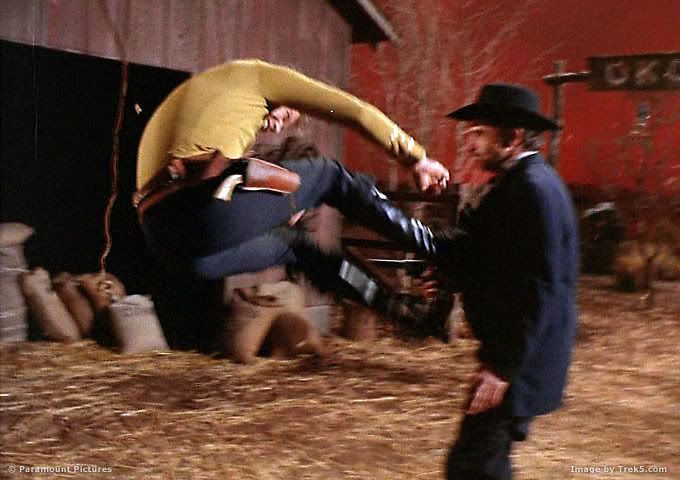“Spectre Of The Gun” ****
An alien race sentence Kirk and his crew to die...in 1880s Tombstone, Arizona.
When I was younger I was not a fan of this episode. I thought it was just okay and admittedly part of what bothered me was the incomplete sets of the supposed western town that the landing party is dispatched to. But over the years I've learned to appreciate this episode more because I grew to understand the symbolism and surreality involved. And I like the music with the harmonica which really helped set the atmosphere.
Everyone in the story except Kirk and company see everything around them as complete and real. And yet, as McCoy states, the town and buildings look incomplete to the
Enterprise landing party. The symbolism is that Kirk and company are in something of a twilight state of mind, much like dreaming, where often the environments in our dreams make little sense to us when remembered while awake, and yet we behave as if those surroundings are real when we're there in our dreams when asleep. And it's that surreality that's the clue to what's really going on long before Spock figures out why their antiquated gas grenade fails to work as expected.
The ending of the episode nails it: the
Enterprise never actually passed the Melkot buoy to establish orbit for Kirk and company to beam down planetside. The entire sequence of events was a powerful telepathic fiction of the Melkots. And it all starts with each member of the bridge crew first hearing the Melkotian buoy's message in each of their own language.
"Spectre Of The Gun" is a variation of "The Corbomite Maneuver" in that the Melkot are testing the
Enterprise crew in their own way much as Balok tested them by threatening them with certain destruction.
My opinion of this episode and story rose as I learned to better understand how it was all supposed to work. It also speaks of using a budgetary limitation and turning it into an asset...at least as far as this story is concerned. It also delivers what I think is a powerful message: mankind ready to kill...and choosing not to.
It's a cool sounding title too.





